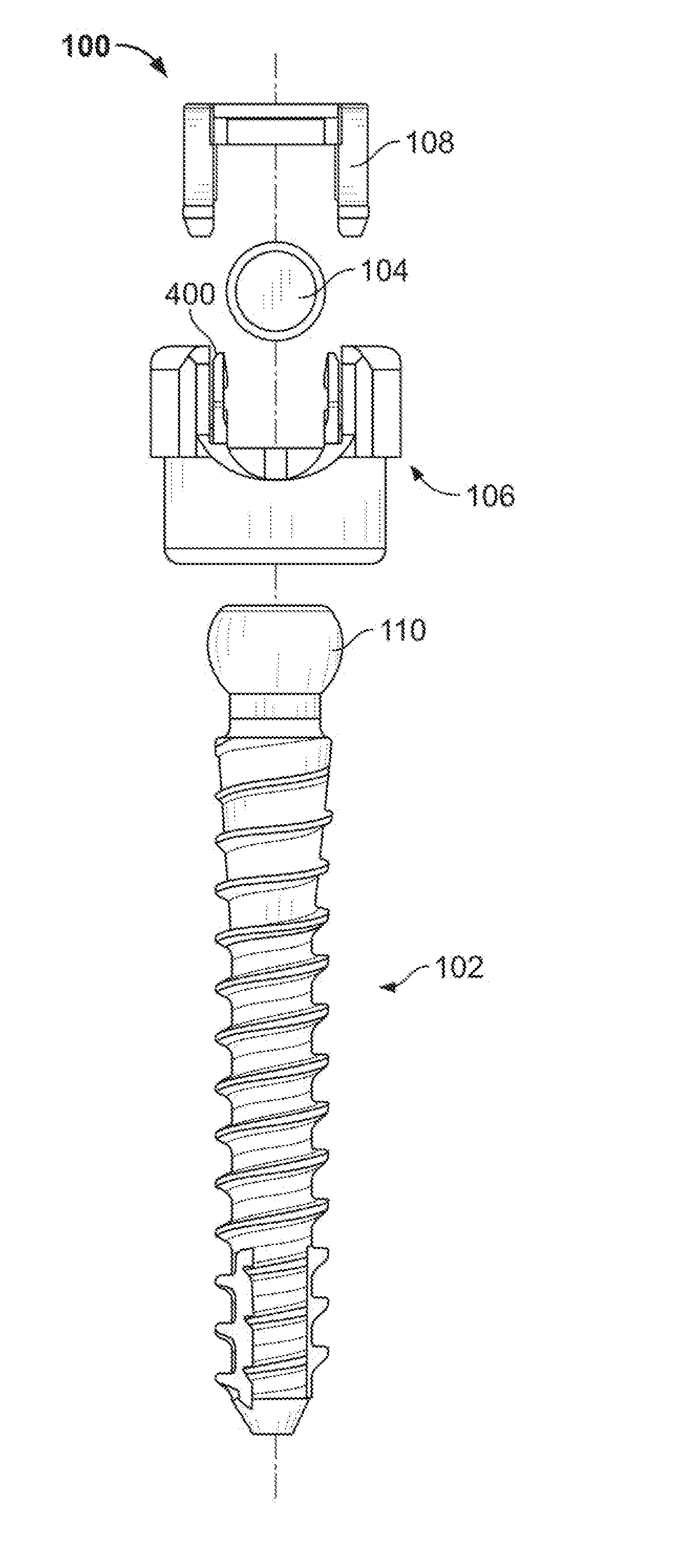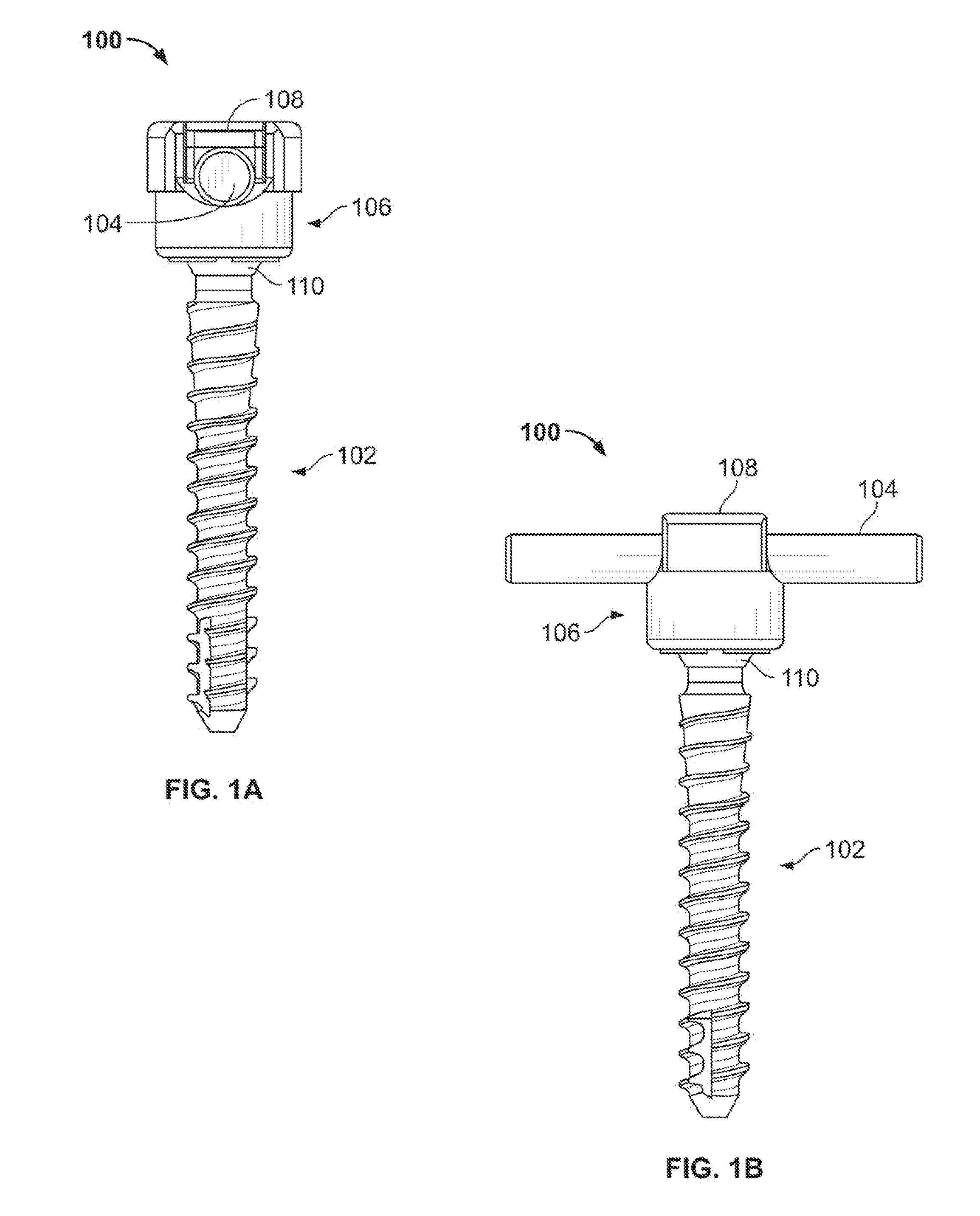Low Profile Dual Locking Fixation System and Offset Anchor Member
a fixation system and low-profile technology, applied in the field of low-profile screw assembly, can solve the problems of increasing the chance of tissue damage in and around the surgical site during installation, increasing the difficulty of assembling and/or installing many devices, and increasing the height of the assembly. , to achieve the effect of minimizing the height of the assembly
- Summary
- Abstract
- Description
- Claims
- Application Information
AI Technical Summary
Benefits of technology
Problems solved by technology
Method used
Image
Examples
Embodiment Construction
[0066]FIGS. 1-43 illustrate systems and methods for locking the orientation of an anchor member and elongate member with respect to a first type of coupling assembly, sometimes referred to as a “tulip assembly,” in which an insert member is inserted linearly into a space within an outer member. Axial shifting of the outer member and insert relative to one another (and the consequent radial compression exerted thereby) locks the position of the coupling assembly relative to an anchor member or fixation device (e.g. a pedicle screw or hook). Further, according to one exemplary embodiment, a coupling assembly may be configured to be placed on the head of a polyaxial pedicle screw after placement of the pedicle screw in a patient's body and configured to receive and positionally secure a top loaded rod. Further details of the present exemplary system and method will be provided below.
[0067]By way of example, pedicle screw systems may be fixed in the spine in a posterior lumbar fusion pr...
PUM
 Login to View More
Login to View More Abstract
Description
Claims
Application Information
 Login to View More
Login to View More - R&D
- Intellectual Property
- Life Sciences
- Materials
- Tech Scout
- Unparalleled Data Quality
- Higher Quality Content
- 60% Fewer Hallucinations
Browse by: Latest US Patents, China's latest patents, Technical Efficacy Thesaurus, Application Domain, Technology Topic, Popular Technical Reports.
© 2025 PatSnap. All rights reserved.Legal|Privacy policy|Modern Slavery Act Transparency Statement|Sitemap|About US| Contact US: help@patsnap.com



